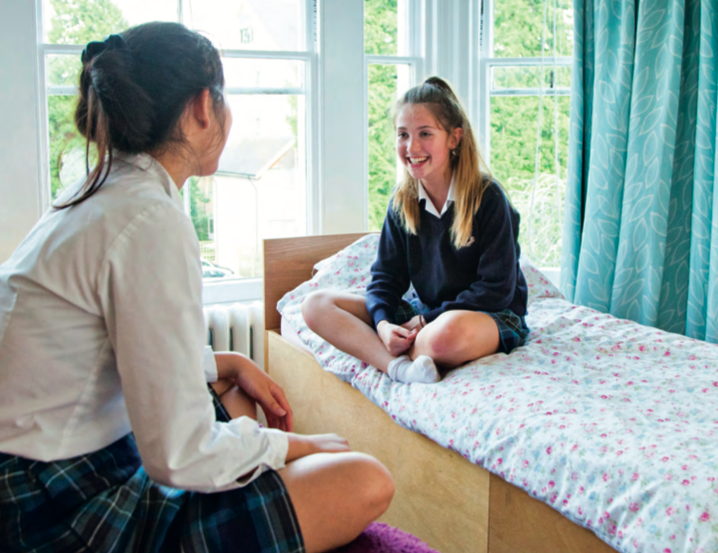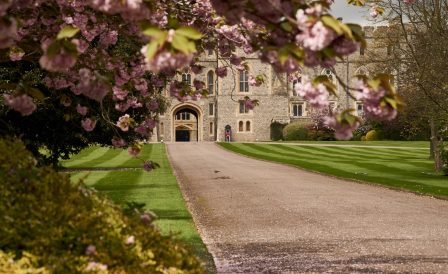Children in the UK sit down at the school desk at the age of four or five and study for 13 years in total. In the UK, schools are divided into public and private. Let’s dive into each of these categories.

Public Schools
The country funds public schools, and tuition is free. Parents pay only for school uniforms, meals and extracurricular activities. Every British family hopes to place their child in a good public school in their area, especially when it comes to primary school, where children study from the ages of 5 to 11. It is beneficial to study in the area where you live. Parents don’t have to sit in the car for hours trying to navigate traffic jams or squeezing into public transport during rush hour and the child adapts faster if classmates are living in the neighbourhood.
It is important to know that public elementary schools do not prepare for the advanced entrance exam (11 + exam) upon transition to high school. If you plan to transfer your child to another high school, it is worth considering the transfer in advance.
Many newcomers often do not have a clear idea of where they want to live. Usually, the area of residence depends on the place of work of the parents or on the cost of renting housing that the family can afford. Still, at the same time, parents strive to choose a school in advance, without considering that they will be asked to show proof of their local address when entering a public school.
Attending kindergarten does not automatically guarantee a place in primary school, therefore, in any case, parents need to reapply for enrolment. You can apply to a maximum of 6 public elementary schools, depending on the region, and, as a result, choose the one that suits you best. By mid-January, a regular application must be submitted along with proof of local residential address.
If you submitted your application later than the specified deadline, then you will find yourself in the queue for those who submitted documents on time and will wait for a free seat to appear. It can be difficult to get into a good, in-demand public school if the number of applications submitted exceeds the number of spaces.
Students are not selected for outstanding ability or high scores upon admission to public primary schools. When enrolling in a secondary public school, the situation changes, and each school has its own criteria for selecting students. Regular public high schools accept based on who lives closer. Still, gymnasiums or colleges look at how high a student’s passing score is received on the entrance exam, regardless of where they live.

Schools can legitimately give priority to children:
- who live in the school the area
- who belong to a particular religion (if it is a religious school)
- who have completed some primary school
- who passed the entrance exam (for the election of schools) successfully
- who already has siblings enrolled in the school
- whose parents have been working at the school for over two years.
Private schools
The UK is so attractive to foreigners because of the reputation of some private boarding schools. The first difference between a public and a private school is that tuition in a private school is paid. On average, tuition in a private school will cost £25,000- 30,000 per year, not counting the school uniform expenses, lunches, trips with the class and mugs.
Usually, private schools have fewer students per class (up to 8), more qualified teachers, a more personal approach and may have better infrastructure, be it laboratories, theatres, gyms and football fields. If the school is located in a small town or village, then it’s in a beautiful surrounding area.

The Private Primary School will prepare your child for any of the entrance exams for the transition to high school and always advise which one is the most suitable. It is not worth arguing that teaching is better than in a public school since specialists are everywhere. However, every private elementary school cares about its reputation, so the school will do everything it can to get your child to move to a decent high school.
If the family needs to move as soon as possible, private schools can offer an individual training plan, which is very helpful.
Enrolment in a private school
When entering a private school, it is not necessary to provide proof of a local address because the main selection criterion is paying for tuition. Toddlers are admitted based on interviews, and middle and high school students are asked to showcase their accomplishments.
Some private schools may close enrolment early or set specific registration dates. There is a myth that if you do not enrol your child in their school from birth, it will be too late. However, you should always call the private school that interests you because vacancies appear at the last minute in most high-demand schools. Many out-of-town schools willingly accept students at any stage throughout the school year.

It is worth noting that the level of preparation in private secondary schools is much higher than in public ones. Such graduates go to the best universities in the UK and the world. However, studying is not only expensive, but also quite demanding. Not every student can cope with such a large academic load. There are, of course, specialised schools, where the emphasis is not only on academic results but on, for example, sports or art. Scouts from football leagues regularly attend these schools and Olympic champions and famous musicians and artists have graduated from them.
Any private secondary school will need to be enroled in, even if the school is not selective. The minimum level of English and mathematics will have to be demonstrated through internal testing. You will also need to provide extracts of academic performance from the last two years and go through an interview. In some more prestigious schools, where at least four excellent students might apply for a single spot, there are additional entrance exams in the subjects that the student plans to study at school. The selection committee, first of all, looks at the student’s interests and the reasons they want to study with them and whether the student will be able to cope with the academic load. All schools offer additional support for learning English to make the student as comfortable as possible.
There are mixed schools in the UK, where boys and girls study together, and separate schools. There are supporters of both forms of education throughout the country, but the final choice always remains with the parents.
Contact us in any convenient way if you are interested in moving to the UK.
Read further: Immigration to the United Kingdom with a partner and children



